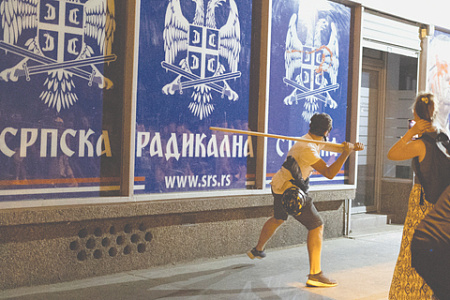
Serbia is teetering on the edge of a significant political crisis as President Aleksandar Vučić has vowed to take “decisive measures” to quell escalating anti-government protests. Following a weekend of violent demonstrations that left several police officers injured and administrative buildings damaged, Vučić announced he would “restore order, peace, and quiet” and “defeat this evil” within the next few days, signaling a potential state-sanctioned crackdown on the months-long unrest.
The wave of protests, organized by students and opposition factions, first erupted last autumn. The initial trigger was a tragic incident in the city of Novi Sad, where a newly constructed train station canopy collapsed, killing 16 people. This event sparked widespread public anger, with initial accusations targeting the Vučić government for alleged corruption and negligence in public infrastructure projects. Since then, the movement has evolved, with demonstrators now accusing the president of authoritarianism and suppressing democratic freedoms.
The past week has seen a dramatic escalation in tensions. What began as largely peaceful demonstrations have morphed into violent clashes on the streets of Belgrade and other cities. Protesters, some with their faces covered, used flares to set fire to a building belonging to the ruling Serbian Progressive Party (SNS) and smashed windows at the offices of an allied party. In response, riot police have deployed tear gas, and videos circulating on social media show scenes of intense street battles, with police clashing with demonstrators who fought back with stones and other projectiles.
President Vučić has consistently dismissed the protests as the work of foreign powers attempting to “destroy Serbia,” repeatedly labeling the participants as “terrorists.” While his government promises to arrest all those involved in the riots, pro-government counter-demonstrations have been allowed to proceed, and critics point to a presidential pardon for a supporter who drove a car into protesting students as evidence of a double standard. This hardline stance from the government has only deepened the country’s political divisions.
The escalating situation is drawing international scrutiny. While the European Union has called on all sides to show restraint and for the government to respect the right to peaceful assembly, Russia has publicly backed the Serbian authorities in their handling of the unrest. This split reaction underscores the complex geopolitical pressures at play in the Balkans. With dozens of protesters already arrested and the president’s plan for “decisive measures” remaining vague, experts warn that Serbia is approaching a dangerous precipice, where a forceful government response could either crush the opposition or ignite an even wider civil conflict.
